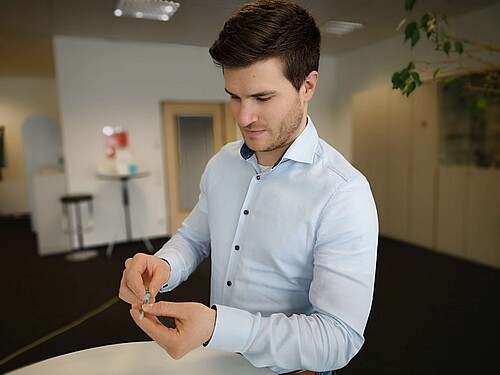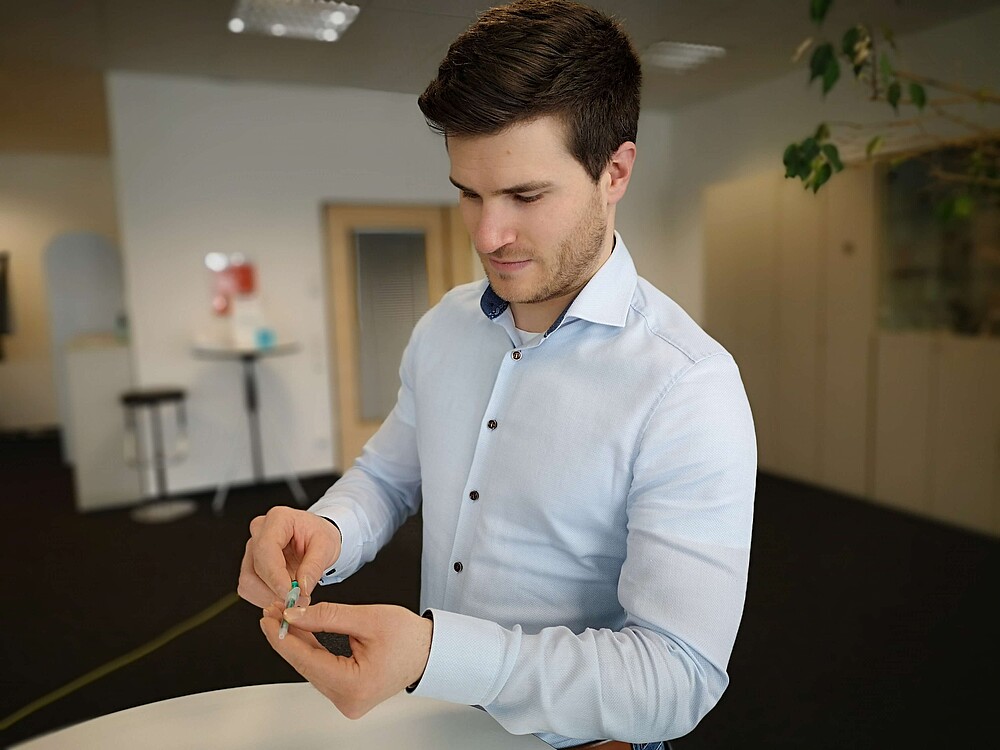How Henke-Sass, Wolf's syringes help save on vaccines
In the fight against the corona virus, the greatest hopes for fighting the pandemic lie in the various vaccines. The question of how the vaccine is injected millions of times also concerns parts of the medical technology industry from the Black Forest-Baar-Heuberg region. The phones at the Tuttlingen-based company Henke Sass Wolf have been ringing hot since the fall. The medium-sized company, which has its headquarters in the Möhringen district, is not only the technologically leading OEM manufacturer in the field of medical endoscopy, but also traditionally as a manufacturer of veterinary technology and syringes for dental anesthesia, for reusable syringes made of glass and metal and also for once known usable syringes made of plastic. The latter are experiencing a sharp increase in demand due to the Covid 19 pandemic.
Five times as many requests as in normal times
"After it became clear about four months ago that the vaccines would be available around Christmas, we received a lot of inquiries from all over the world," says Andreas Dürler. The product manager is responsible for the disposable syringes business at Henke-Sass, Wolf. Most inquiries relate to two- and three-piece syringes in small sizes of one or two milliliters that are suitable for the Covid-19 vaccination.
“We are receiving around five times as many inquiries for the HSW HENKE-JECT® sprayers as in normal times. Sometimes we get individual inquiries for quantities in the tens of millions, which we would normally sell in one year,” explains Andreas Dürler. Customers include vaccination centers in Germany, for example, which have a great need for syringes and cannulas once vaccinations have started. The two- and three-part plastic syringes are manufactured in production plants in Germany and China. Production has been running at full speed for weeks now. And for the coming months, Henke-Sass, Wolf continues to expect strong demand. "We are therefore working hard to be able to further increase the capacities for the sprayer models that are in demand," says Andreas Dürler. For him and his colleagues, the syringe boom means a lot of coordination effort.
This is how a hypodermic syringe works
Basically, each syringe consists of two or three parts. There is a plunger rod in the syringe barrel that is used to pull up the syringe. At the upper end of the syringe, the cylinder narrows so that the plunger rod cannot be pulled out when the syringe is opened. By pushing back the piston rod, the vaccine enters the patient's body after the cannula has been inserted. A rubber stopper is fitted to the front of the plunger rod on the three-part syringes. This ensures that the syringe is particularly easy and precise to open. The three-part syringes are easier to produce because a little less precision is required in production.
Syringes help save on vaccines
Another factor is beneficial in view of the scarce and valuable vaccines. The small-volume syringes, which are also used for the Covid 19 vaccinations, are equipped with a so-called economy spike. "An additional pin is attached to the tip of the piston rod inside the syringe, which penetrates the cone," explains Stefan Knefel, authorized signatory for sales and marketing for single-use products. As a result, the dead volume in the syringe is significantly reduced, less vaccine remains in the syringe and the loss of medication is reduced to a minimum. It is only with these so-called low-dead-space syringes that one receives, for example, the additional vaccine doses from the ampoules of the Covid 19 vaccinations that have recently been discussed in public. "There aren't many manufacturers who produce syringes with such precision," says Knefel.
Back

Andreas Dürler, Product and Sales Manager Veterinary Products, präsentiert eine HSW HENKE-JECT® Spritze, die unter anderem auch für Covid-19-Impfungen genutzt wird. Bild: HSW